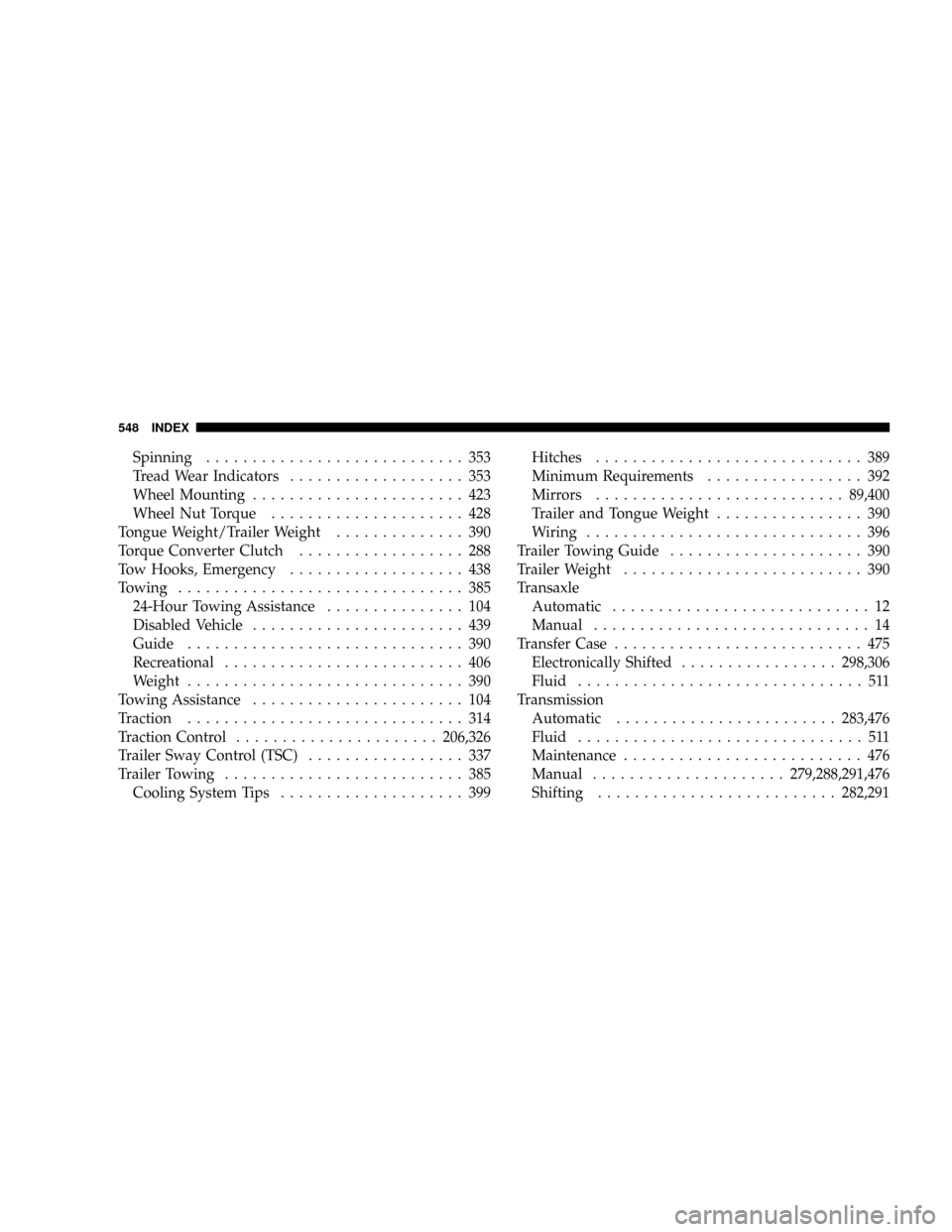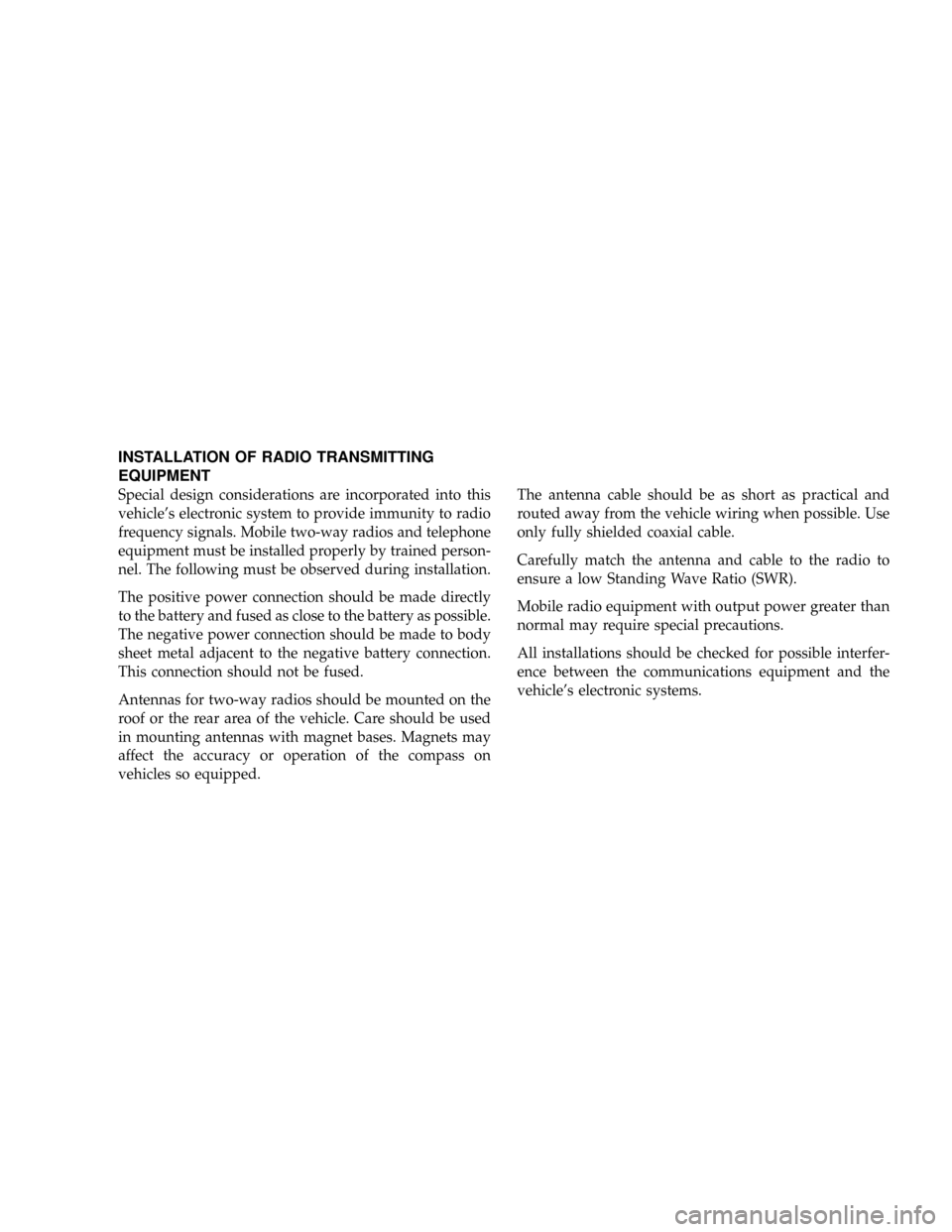Page 54 of 554

Airbag System Components
The airbag system consists of the following:
²Occupant Restraint Controller
²Side Remote Acceleration Sensors (if equipped)
²Airbag Warning Light
²Driver Airbag
²Passenger Airbag
²Window Bags above Side Windows (if equipped)
²Steering Wheel and Column
²Instrument Panel
²Interconnecting Wiring
²Knee Impact Bolsters
²Front Acceleration Sensors (1500 Vehicles Only)
²Driver and Front Passenger Seat Belt Pretensioners (if
equipped)
²Driver Seat Track Position Sensor (if equipped)
²Passenger Side Frontal Airbag ON/OFF Switch (2500/
3500 Regular Cab Vehicles Only)
²Passenger Airbag Disable (PAD) Indicator Light
(2500/3500 Regular Cab Vehicles Only)
How the Airbag System Works
²
TheOccupant Restraint Controller (ORC)determines
if a frontal collision is severe enough to require the
airbags to inflate. The front airbag inflators are de-
signed to provide different rates of airbag inflation
from information provided by the ORC. The ORC will
not detect rollover or rear collisions.
The ORC also monitors the readiness of the electronic
parts of the system whenever the ignition switch is in
52 THINGS TO KNOW BEFORE STARTING YOUR VEHICLE
Page 61 of 554

Maintaining Your Airbag System
WARNING!
²Modifications to any part of the airbag system
could cause it to fail when you need it. You could
be injured if the airbag system is not there to
protect you. Do not modify the components or
wiring, including adding any kind of badges or
stickers to the steering wheel hub trim cover or the
upper right side of the instrument panel. Do not
modify the front bumper, vehicle body structure,
or add aftermarket side steps or running boards.
²You need proper knee impact protection in a
collision. Do not mount or locate any aftermarket
equipment on or behind the knee bolsters.
²It is dangerous to try to repair any part of the
airbag system yourself. Be sure to tell anyone who
works on your vehicle that it has an airbag system.NOTE:
Perchlorate Material ± special handling may ap-
ply, see www.dtsc.ca.gov/hazardouswaste/perchlorate
Enhanced Accident Response System
If the airbags deploy after an impact and the electrical
system remains functional, vehicles equipped with
power door locks will unlock automatically. In addition,
approximately five seconds after the vehicle has stopped
moving, the interior lights will light until the ignition
switch is turned off.
Airbag Light
You will want to have the airbags ready to
inflate for your protection in an impact. While
the airbag system is designed to be mainte-
nance free, if any of the following occurs, have
an authorized dealer service the system promptly:
²The airbag light does not come on or flickers during
the six to eight seconds when the ignition switch is
first turned ON.
THINGS TO KNOW BEFORE STARTING YOUR VEHICLE 59
2
Page 141 of 554
Multifunction Control Lever
The multifunction control lever is located on the left side
of the steering column.
Turn Signals
Move the lever up or down to signal a right-hand or
left-hand turn.
The arrow on either side of the instrument cluster flashes
to indicate the direction of the turn, and proper operation
of the front and rear turn signal lights. If a defective bulb
or wiring circuit is detected for the turn signal system, the
arrow indicators will flash at a faster rate. If an indicator
fails to light when the lever is moved, it would suggest
that the switch or indicator lamp is defective.You can signal a lane change by moving the lever
partially up or down.
Turn Signal Lever
UNDERSTANDING THE FEATURES OF YOUR VEHICLE 139
3
Page 398 of 554
Towing Requirements Ð Trailer Lights & Wiring
Whenever you pull a trailer, regardless of the trailer size,
stop lights and turn signals on the trailer are required for
motoring safety.
The Trailer Tow Package may includea4and7pin
wiring harness. Use a factory approved trailer harness
and connector.
NOTE:Do not cut or splice wiring into the vehicles
wiring harness.
The electrical connections are all complete to the vehicle
but you must mate the harness to a trailer connector.
Refer to the following illustrations.
4-Pin Connector
396 STARTING AND OPERATING
Page 399 of 554
WARNING!
Any work done to the vehicles electrical system, or
wiring, should be performed by a qualified automo-
tive technician, if done improperly it may cause
damage to the electrical system wiring and could
result in serious or fatal injury.
7-Pin Connector
STARTING AND OPERATING 397
5
Page 550 of 554

Spinning............................ 353
Tread Wear Indicators................... 353
Wheel Mounting....................... 423
Wheel Nut Torque..................... 428
Tongue Weight/Trailer Weight.............. 390
Torque Converter Clutch.................. 288
Tow Hooks, Emergency................... 438
Towing............................... 385
24-Hour Towing Assistance............... 104
Disabled Vehicle....................... 439
Guide.............................. 390
Recreational.......................... 406
Weight.............................. 390
Towing Assistance....................... 104
Traction.............................. 314
Traction Control......................206,326
Trailer Sway Control (TSC)................. 337
Trailer Towing.......................... 385
Cooling System Tips.................... 399Hitches............................. 389
Minimum Requirements................. 392
Mirrors...........................89,400
Trailer and Tongue Weight................ 390
Wiring.............................. 396
Trailer Towing Guide..................... 390
Trailer Weight.......................... 390
Transaxle
Automatic............................ 12
Manual.............................. 14
Transfer Case........................... 475
Electronically Shifted.................298,306
Fluid............................... 511
Transmission
Automatic........................283,476
Fluid............................... 511
Maintenance.......................... 476
Manual.....................279,288,291,476
Shifting..........................282,291
548 INDEX
Page 553 of 554

INSTALLATION OF RADIO TRANSMITTING
EQUIPMENT
Special design considerations are incorporated into this
vehicle's electronic system to provide immunity to radio
frequency signals. Mobile two-way radios and telephone
equipment must be installed properly by trained person-
nel. The following must be observed during installation.
The positive power connection should be made directly
to the battery and fused as close to the battery as possible.
The negative power connection should be made to body
sheet metal adjacent to the negative battery connection.
This connection should not be fused.
Antennas for two-way radios should be mounted on the
roof or the rear area of the vehicle. Care should be used
in mounting antennas with magnet bases. Magnets may
affect the accuracy or operation of the compass on
vehicles so equipped.The antenna cable should be as short as practical and
routed away from the vehicle wiring when possible. Use
only fully shielded coaxial cable.
Carefully match the antenna and cable to the radio to
ensure a low Standing Wave Ratio (SWR).
Mobile radio equipment with output power greater than
normal may require special precautions.
All installations should be checked for possible interfer-
ence between the communications equipment and the
vehicle's electronic systems.